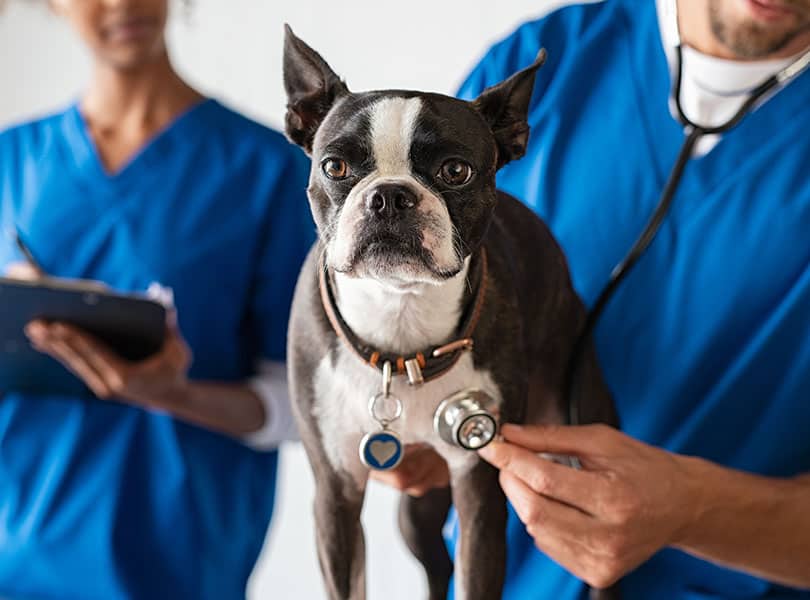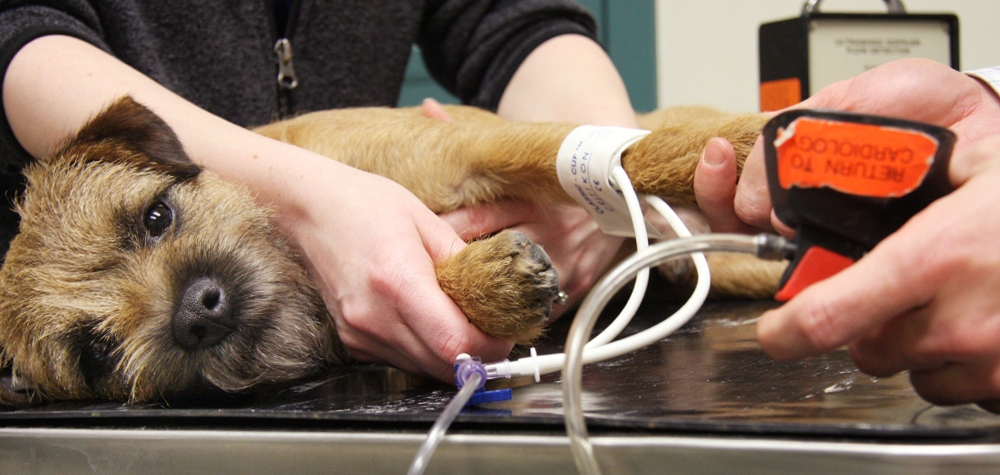The Function of Ultrasound and CT Scan in Modern Veterinary Practices: Insights From Experienced Professionals
In modern-day vet techniques, ultrasound and CT scans considerably improve analysis abilities. These imaging techniques give vital understandings right into animal wellness, directing therapy decisions. Experienced specialists identify the special advantages of each technique. Ultrasound provides real-time analyses, while CT scans deliver complex physiological information. Understanding their functions and applications elevates crucial questions concerning their effect on client end results and the future of veterinary diagnostics. What insights can be gotten from their combined use?
Comprehending Ultrasound in Veterinary Medication
Ultrasound is a necessary analysis device in veterinary medicine, using a non-invasive method to imagine internal frameworks. This imaging strategy utilizes high-frequency sound waves to develop real-time pictures of cells and body organs, enabling vets to assess problems without surgical intervention. Typical applications consist of reviewing the heart, liver, kidneys, and reproductive organs, in addition to keeping an eye on pregnancies.The procedure is fairly fast and can be executed in different settings, making it an obtainable choice for vets. Unlike radiography, ultrasound supplies in-depth information about soft cells and blood flow, which is vital for accurate diagnoses.Veterinary specialists depend on ultrasound to find abnormalities such as growths, cysts, and liquid accumulation. Its ability to lead biopsies and various other procedures even more improves its energy in medical technique. By using a effective and risk-free way to check out interior composition, ultrasound has become a keystone of modern-day veterinary diagnostics.
The Advantages of CT Scans for Animal Diagnostics
CT scans offer substantial advantages in vet diagnostics by supplying enhanced accuracy in determining internal conditions (CT Scans For Animals). As a non-invasive imaging strategy, they ensure the safety and security and comfort of pets during assessments. In enhancement, CT scans promote a comprehensive evaluation of inner frameworks, enabling a lot more reliable treatment planning
Boosted Analysis Accuracy
Improvements in imaging innovation have actually substantially improved analysis precision in veterinary medication, especially via making use of CT scans. These scans supply comprehensive cross-sectional photos of an animal's interior frameworks, permitting veterinarians to determine problems with accuracy. The high resolution and three-dimensional capabilities of CT imaging help with the detection of conditions such as growths, cracks, and inner bleeding that may be missed with standard imaging techniques. In addition, CT scans can aid in pre-surgical preparation by using a complete sight of anatomical partnerships. This level of information not only improves the precision of diagnoses yet also help in customizing efficient therapy plans. As a result, the assimilation of CT modern technology right into veterinary methods is changing the landscape of animal health care, improving results for people.
Non-Invasive Imaging Technique
The introduction of non-invasive imaging techniques has actually changed animal diagnostics, with CT checks becoming a popular tool in vet techniques. These scans provide high-resolution, cross-sectional photos of a pet's interior structures, allowing vets to assess complicated problems without the demand for invasive procedures. The advantages of CT scans include their ability to find growths, cracks, and internal blood loss with exceptional precision. In addition, they facilitate the assessment of soft cells and organs, boosting diagnostic capacities. The rate of CT scanning makes it possible for quick decision-making, which is crucial in emergency situations. By lessening tension and discomfort for the pet, CT scans add to an extra gentle strategy to diagnostics, inevitably enhancing therapy results and progressing veterinary treatment.
Comprehensive Internal Evaluation
A thorough inner evaluation is necessary for precise diagnosis and reliable therapy in vet medication. CT checks deal significant advantages hereof, offering comprehensive cross-sectional photos of an animal's inner frameworks. This innovative imaging method boosts visualization of complex physiological regions, allowing veterinarians to determine irregularities such as lumps, fractures, and interior bleeding with higher accuracy. On top of that, CT scans assist in the assessment of problems that may be challenging to detect via conventional techniques. The speed and accuracy of CT imaging likewise add to timely interventions, boosting person end results. As vet practices increasingly include CT innovation, the benefits of extensive interior assessments come to be evident, strengthening the importance of this tool in contemporary veterinary diagnostics.
Contrasting Ultrasound and CT Imaging Techniques
While both ultrasound and CT imaging offer necessary functions in veterinary diagnostics, each method supplies unique benefits and constraints that can affect clinical decision-making. Ultrasound is especially valued for its real-time imaging abilities, enabling vets to observe dynamic physical procedures. This strategy is non-invasive, read what he said portable, and does not entail ionizing radiation, making it a more secure choice for both animals and medical professionals. Nevertheless, ultrasound might have constraints in visualizing particular physiological frameworks or deep tissues.Conversely, CT imaging provides detailed cross-sectional sights of the body, permitting for accurate localization of problems. It excels in reviewing complicated organs and frameworks, especially in the thorax and abdomen. Nonetheless, CT scans require sedation or anesthetic in most cases and entail direct exposure to ionizing radiation. Ultimately, the option in between ultrasound and CT relies on the details professional situation, the location of passion, and the seriousness of the diagnostic requirements.
Case Researches: Successful Medical Diagnoses Via Imaging
Study illustrate the significant improvements in diagnostic precision accomplished with advanced imaging modern technologies like ultrasound and CT scans in vet practices. These improvements not just enhance the detection of various conditions but also help with prompt and efficient therapy strategies. Assessing details instances can highlight the transformative effect of these imaging methods on veterinary medication.
Diagnostic Accuracy Improvements

Imaging Modern Technology Advancements
As vet imaging innovation continues to progress, its influence on diagnostic abilities becomes significantly evident. Recent case researches highlight the effective application of advanced ultrasound and CT scan methods in determining complicated conditions. For instance, a vet clinic used high-resolution CT scans to diagnose a rare type of lung cancer in a dog, which traditional imaging had missed. Likewise, an ultrasound evaluation exposed an abdominal mass in a feline, triggering timely surgical intervention and a positive result. These innovations not just boost diagnostic precision yet additionally allow vets to develop targeted treatment plans. By leveraging sophisticated imaging innovations, vet specialists are substantially improving person care, resulting in extra reliable administration of numerous health problems in animals.
The Role of Imaging in Emergency Situation Vet Care
Imaging plays a crucial duty in emergency veterinary treatment, supplying veterinarians with essential information needed to make rapid, enlightened choices. In urgent circumstances, strategies like ultrasound and CT scans allow specialists to quickly analyze an animal's interior structures, recognizing essential problems such as inner blood loss, fractures, or organ irregularities. These imaging methods enable for real-time analyses, facilitating timely interventions that can be life-saving. Ultrasound is vital for examining soft cells injuries and conditions like fluid build-up, while CT checks offer in-depth images of complicated anatomical structures, vital for detecting injury situations. The rate and precision of these imaging methods enhance the vet's capability to develop reliable treatment strategies, making certain the very best feasible results for their individuals. The assimilation of sophisticated imaging modern technologies into emergency veterinary practices is not only advantageous yet significantly required, as it boosts analysis capabilities and boosts general animal care during critical moments.

Training and Experience in Vet Imaging
Although advanced imaging strategies such as ultrasound and CT scans are essential for effective vet care, the effective application of these technologies heavily relies on the training and knowledge of veterinary professionals. Proficient use imaging devices needs extensive understanding of composition, pathology, and the concepts underlying each modality. Veterinary specialists must go through specialized my review here training to accurately translate imaging outcomes, which is essential for diagnosing conditions and planning treatment.Certifications and continuing education in veterinary imaging boost the skills of professionals, allowing them to stay upgraded with technological improvements. Partnership between vets and radiologists typically leads to enhanced diagnostic precision, as specialists can supply understandings into complex instances. Furthermore, functional experience in handling imaging tools promotes confidence in its application. Ultimately, the high quality of vet imaging services is straight associated to the degree of training and proficiency possessed by the specialists utilizing these essential diagnostic tools.
Future Trends in Diagnostic Imaging for Animals
With the rapid advancements in modern technology, veterinary analysis imaging is poised for significant evolution in the coming years. Emerging trends indicate a change in the direction of more accessible and portable imaging techniques, such as portable ultrasound gadgets, which can enhance area diagnostics. In addition, the combination of artificial intelligence is expected to transform image analysis, permitting for quicker and more precise analyses of results.Moreover, innovations in 3D imaging strategies and computed tomography will certainly give veterinarians with even more complete views of animal composition, causing enhanced therapy plans. Virtual truth technology see may additionally play a function in surgical planning and education, providing vets a distinct viewpoint on intricate cases.As telemedicine remains to expand, remote examinations facilitated by diagnostic imaging will certainly become extra usual, enabling professionals to assist family doctors in real-time. In general, these trends are readied to improve the effectiveness and performance of vet treatment, ultimately enhancing pet outcomes.
Regularly Asked Inquiries
Just How Much Do Ultrasound and CT Checks Expense in Veterinary Clinics?
The prices of ultrasound and CT scans in veterinary facilities typically range from $300 to $1,500, depending upon variables such as area, facility type, and certain treatments needed for the pet's medical diagnosis and therapy.

Exist Any Type Of Dangers Connected With Ultrasound and CT Scans for Pet Dogs?
Ultrasound and CT scans generally position very little risks to animals. Prospective issues consist of sedation reactions and direct exposure to anesthetics. Vets meticulously assess each situation to minimize any type of threats related to these analysis procedures
How Much Time Do Ultrasound and CT Procedures Normally Take?
Ultrasound treatments usually take about half an hour to an hour, depending on the intricacy. CT scans, being even more thorough, usually need thirty minutes to 90 minutes, consisting of prep work and recuperation time for the animal.
Can All Veterinarians Perform Ultrasounds and CT Scans?
Not all vets can carry out ultrasounds and CT scans. Specialized training and certification are usually required to ensure proficiency in these innovative imaging techniques, which might limit their schedule to vets with extra certifications and sources.
What Sorts Of Animals Profit A Lot Of From These Imaging Techniques?
Particular animal species, specifically pet dogs and cats, benefit significantly from ultrasound and CT scans. These imaging strategies boost diagnostic accuracy for conditions like lumps, interior injuries, and body organ problems, leading to improved therapy outcomes and individual treatment. The high resolution and three-dimensional capacities of CT imaging assist in the discovery of problems such as lumps, cracks, and internal bleeding that could be missed out on with conventional imaging techniques. Case researches show the considerable improvements in diagnostic accuracy achieved with sophisticated imaging technologies like ultrasound and CT scans in vet practices. Improving diagnostic precision in vet techniques has actually been significantly helped by improvements in imaging technologies such as ultrasound and CT scans. Innovative imaging strategies such as ultrasound and CT scans are important for effective vet treatment, the successful implementation of these modern technologies greatly depends on the training and expertise of vet experts. Vet experts need to undergo specific training to precisely analyze imaging results, which is important for diagnosing problems and preparing treatment.Certifications and proceeding education in vet imaging improve the abilities of professionals, allowing them to stay updated with technological innovations.